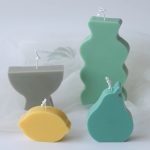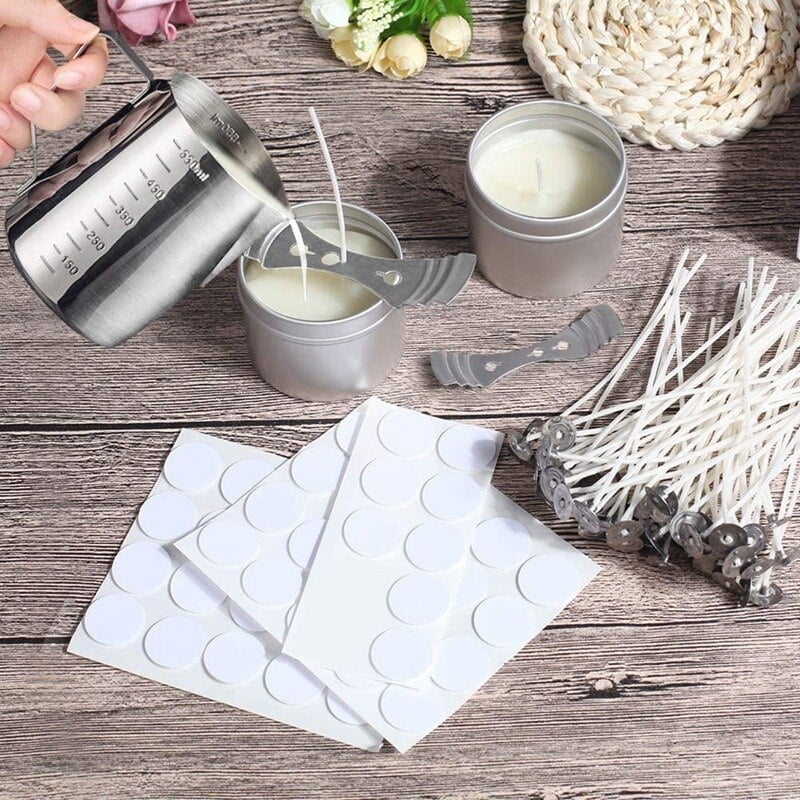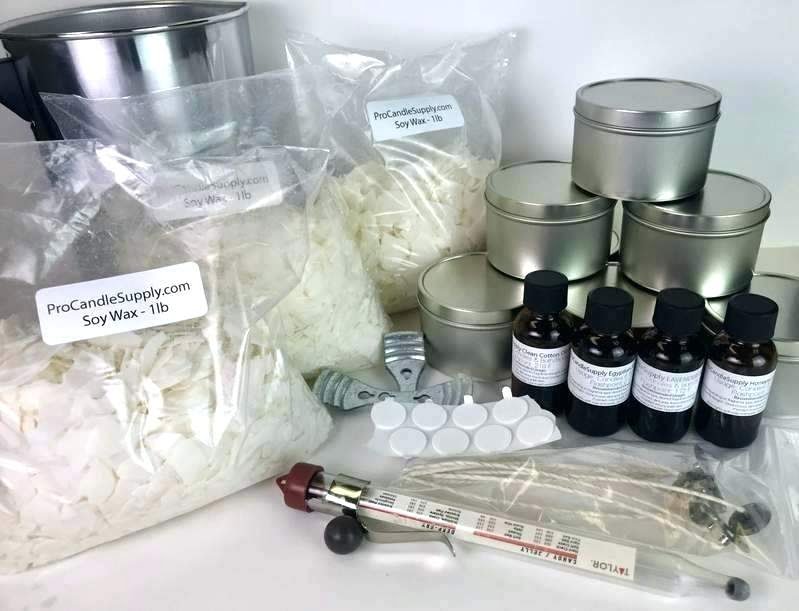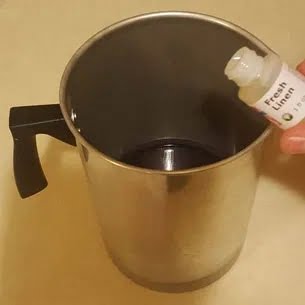Introduction
Natural oils play an important part in the candle-making process. From ancient times to our modern world, this key ingredient has been used to create scented and aromatic candles that bring light, warmth, and ambiance into homes.
There are many benefits to using natural oils for candle making. Most importantly, they make it possible to infuse candles with delightful aromas. Many natural oils can promote relaxation and mindfulness, allowing for a calming environment in the home. Additionally, the use of natural essential oils can result in improved air quality as the molecules present in these materials interact with dust particles, fungi and bacteria present in the air.
One of the best practices when purchasing natural oil for candle-making is to ensure the oil originates from reputable sources that do not offer synthetic oils or fragrances. It is wise to buy cold pressed or steam distilled versions of certain essential oils as this offers higher levels of purity than distillates produced through chemical methods. Always read labels before buying so that you’re sure you’ve bought just what you need for your candle-making project!
It’s also good practice when adding essential oils to candles that trace amounts are enough ” too much oil can leave your candles wet and mushy or cause them not to burn at all! Finally, it’s important that anyone handling essential oils is aware of any potential allergies and sensitivities it may cause as well as any risks associated with inappropriate usage such as ingestion or inhalation.
Types Of Natural Oils For Candle Making
Natural oils for candle making can vary greatly and can provide many different desired effects when used correctly. Among the different types of natural oils, coconut oil is one of the most popular for larger scale production. It produces a high-quality, clean burning with minimal soot and a good scent throw. Furthermore, it is relatively low cost and readily available in bulk quantities. Soy wax has become increasingly popular among manufacturers due to its long-lasting burn time and lower melting point. Even though soy candles require more fragrance than paraffin, they have a milder scent when lit and will not scorch easily. Palm oil is ideal for votive and container candles due to its slow burning nature; however, it can be difficult to work with because it has a higher melting point than other natural oils. Beeswax candles have one of the longest burn times but have been found to produce more soot than others due to the particular type of fatty acids in the material itself. Moreover, their distinct honey aroma provides an alluringly unique scent that cannot be replicated with any other naturally derived waxes or oils.
Benefits Of Natural Oils For Candle Making
Natural oils have a wide range of beneficial uses, from the prevention of health problems to their promotion of sustainable living. When it comes to candle making, natural oils can be an invaluable resource for both environmental and health reasons. Plant-based oils provide longer burning candles that also produce less smoke than traditional paraffin candles made with petroleum-based waxes. Using natural oils for your candle-making endeavors helps reduce the amount of airborne pollutants and other toxic byproducts.
Common essential oils like lavender and tea tree have been used by makers of natural candles, while others prefer scented candle fragrances such as citrus or jasmine. Natural plant waxes such as soy or beeswax are also common. These offer a cleaner burn than paraffin and tend to release fewer particles into the air when burned, resulting in better air quality. Furthermore, using natural oils for candle making eliminates the use of harsh chemicals which can be detrimental to human and environmental health.
The addition of essential oils helps create lovely aromas that can lift one’s mood, reduce stress levels, act as an allergen reducer and enhance overall wellbeing. Natural ingredients like herbs and spices can also be used to add interesting aromas like cinnamon or vanilla bean extracts that further purify the air without having any adverse effects on human health unlike some artificial perfumes. Natural food grade dyes made with fruits or vegetables are also perfect choices for dying pillar candles with vibrant colors instead of using chemical fillers. This practice not only results in providing a far safer product but it’s also eco-friendly too!
Using natural ingredients in place of synthetic or petroleum based materials doesn’t only reduce emissions but has the potential to save money since they are often more cost effective alternatives in comparison to traditional options found on store shelves today. In conclusion, taking steps towards creating healthier candles through the use of natural ingredients should be encouraged due its immense benefits, from economical savings on supplies to improved air quality that comes from eliminating hazardous materials from our environment.
Common Natural Oils For Candle Making
Natural oils for candle-making have become increasingly popular with crafters and hobbyists alike. These natural, self-sourced materials lend unique scents and textures to the finished product. Depending on the type of candle and personal desired effects, there are a variety of natural options to choose from, including olive oil, jojoba oil, sweet almond oil, sunflower oil, coconut oil and more.
Olive Oil – This is a great all-around choice for an eco-friendly option. It has been used as a base for perfumers over the centuries due to its ability to hold scent and add longevity to products. Through cold process systems, fragrant properties of the chosen scent can be fully harnessed which results in high quality candles with an intense scent that lasts much longer than soy or synthetic blend candles.
Jojoba Oil – is a popular choice for vegetable based waxes when making container candles as it hardens easily with minimal shrinkage upon cooling. Its light texture makes it ideal as it is easy to mix into existing recipes without adding heaviness or significant discoloration; this leaves color integrity intact while allowing room for fragrance variations or increases in commodity density.
Sweet Almond Oil – This odorless mineral oil variant is suitable for both hot process and gel wax formulas providing strength, stability, and resistance against changes in temperature ensuring long burning times without melting excessively. Its fluid texture makes it easy to pour while adding body and depth of color to your creations that enhances their look while reducing smoke emissions during burning times making them safe indoors or outdoors depending on usage recommendations handled by local fire marshal offices.. Hotter climates may require additional protective drying time prior to making candles from Sweet Almond Oil due to its lower flashpoint temperatures compared to other comparable carrier oils such as coconut or palm..
Sunflower Oil – It binds well with other natural ingredients creating hard wearing candles that offer greater heat resistances than softer more flexible alternatives like beeswax blends do. Sunflower Candles are slow burning so care should be taken when trimming wicks prior lite up times but provide evenly distributed brightness through normal candle runtimes thanks to its solid form stability when exposed direct flame velocities..
Coconut Oil – Ideal carrier oils because they have relatively high melting points yet remain fluid during use so they can easily mixed into existing recipes without resulting excessive thickening or softening of commodities being held within new molds after completing burn cycle tests successfully proving reliable quality assurance standards met backed with safety protocols in place protecting consumers best interest across the board..
Making Candles With Natural Oils
When making candles from natural oils, the first step is to select the right oil. Choose a high-quality oil that has no additives or preservatives. A good way to find a quality oil for candle making is to look for one with a natural label; these types of oils are typically made from plant sources instead of chemical ones. After selecting the proper oil, it’s time to start customizing your candle. There are numerous factors that can be adjusted such as scent, wax type, and wicking material. The scent of your candle will come from the essential or fragrance oils you choose, depending on if you prefer an uplifting aroma or one that provides great therapeutic benefits. Now comes deciding what kind of wax you would like; soy wax retains strong fragrances and clean burning properties while beeswax provides firm holds in tins and pillars and exemplary scent retention. Lastly, wicking material contributes significantly to overall burn quality so it’s important to choose something like cotton or hemp that won’t curl up while burning; these two materials work well together since they both provide excellent flame control. After gathering all ingredients, you’re ready to start making beautiful candles with natural oils! Gently heat up your wax and stir in fragrance oils until mixture reaches roughly 160 degrees Fahrenheit before pouring into molds or containers. Let cool before trimming wick and you now have your own unique and handmade candles complete with natural ingredients!
Recipes & Tips For Crafting Natural Oils Candles
Making candles with natural oils is an interesting craft project that can be a great way to relax, relieve stress, and add a touch of beauty to your home décor. Natural oils bring such wonderful scents and aromatherapy benefits that they make candle making a truly enjoyable activity. Before starting, bear in mind that all essential oils have specific properties so it is important to select the right combinations for your personal projects and for those you are gifting.
When it comes to supplies for your natural oil recipes, the key items needed are: soy wax or beeswax flakes for creating candle molds, cotton wicks and metal tabs to torch or staple the wires onto candle molds or containers, thermometers for measuring temperatures when melting wax and essential oils , containers or candle molds as well as various scent releasing ingredients such as herb infusions. You will also need safety gear such as oven mitts, goggles and face masks when heating up materials.
The type of container to use will depend on the recipe you’re selecting and the size you want your finished product to be. If you’re using pre-made waxes like soy or beeswax flakes, watch out for possible shrinkage during curing time so favor deeper vessels if needed. For a more creative approach combined with special fragrances consider using glassware such as glasses, jars and vases lined along walls in bathrooms or bedrooms will look amazing and will serve dual purposes enabling both odor elimination plus ambient aesthetic sensations!
Conclusion
Natural oils are essential components to any candle-making project. Not only do they provide a pleasant aroma, but also have calming properties that make them hard to resist. In addition to the sensory appeal, natural oils are also important ingredients for safer candles with no artificial scents, toxins or pollution. By utilizing natural oils in place of artificial fragrances and waxes, we can craft beautiful candles with minimal impact on the environment while still expressing our creativity and enjoying the aromatic benefits they provide. When used correctly and safely, these natural oil-based candles will give us more enjoyment and peace of mind while filling our space with an even greater level of ambience.

Welcome to my candle making blog! In this blog, I will be sharing my tips and tricks for making candles. I will also be sharing some of my favorite recipes.





